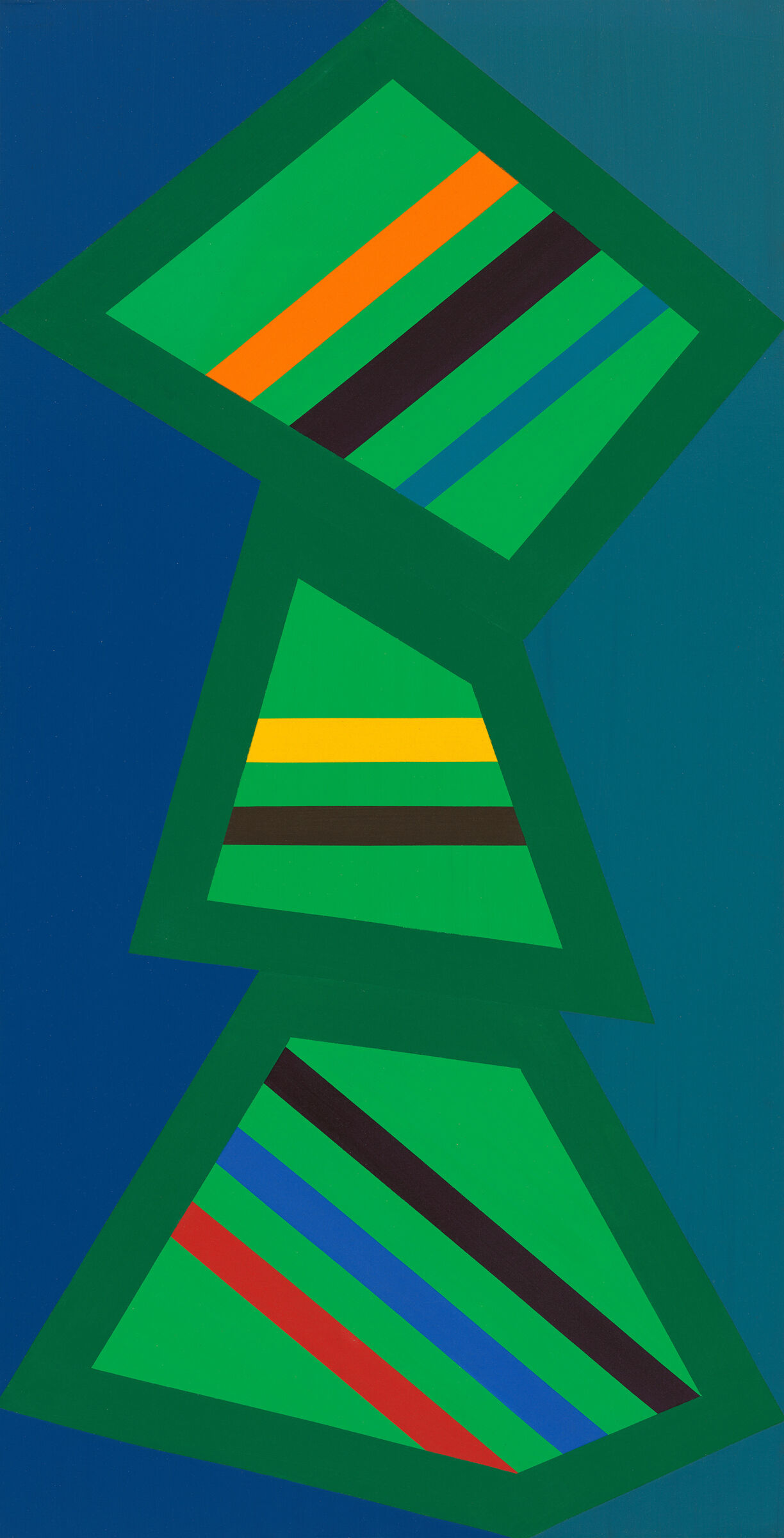In the Balance: Between Painting and Sculpture, 1965–1985 | Art & Artists
Oct 19, 2022–Mar 5, 2023
In the Balance: Between Painting and Sculpture, 1965–1985 | Art & Artists
Freddy Rodríguez
5
When Freddy Rodríguez began painting abstract compositions in 1970, he was compelled by what he called the “emotional side” of geometric art. He favored a sharp, precise painting technique because it offered a contrast to the tumult of a childhood lived under the regime of Rafael Leónidas Trujillo Molina, a brutal dictator who ruled the Dominican Republic from 1934 until his assassination in 1961; Rodríguez immigrated to New York two years later, at age eighteen. To be a “geometric artist,” he explained, you “have to be really together, emotionally, physically, intellectually.”
Rodríguez often embedded cultural references into his works. The title Y me quedé sin nombre (And I ran out of names), for example, riffs on the modernist tradition of leaving abstractions untitled. The artist also frequently drew inspiration from Afro-Caribbean dance traditions. Here, the stacked shapes and variety of angled lines evoke the multisensory experience of Merengue and Bachata, dance forms of deep significance to the Dominican Republic’s cultural traditions that were often coopted as symbols of nationalist propaganda during Trujillo’s dictatorship.

